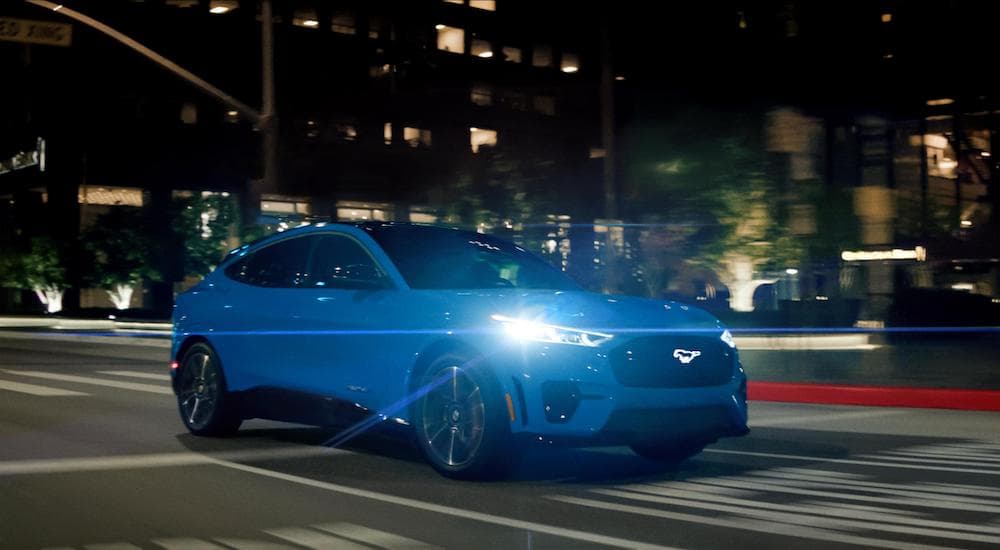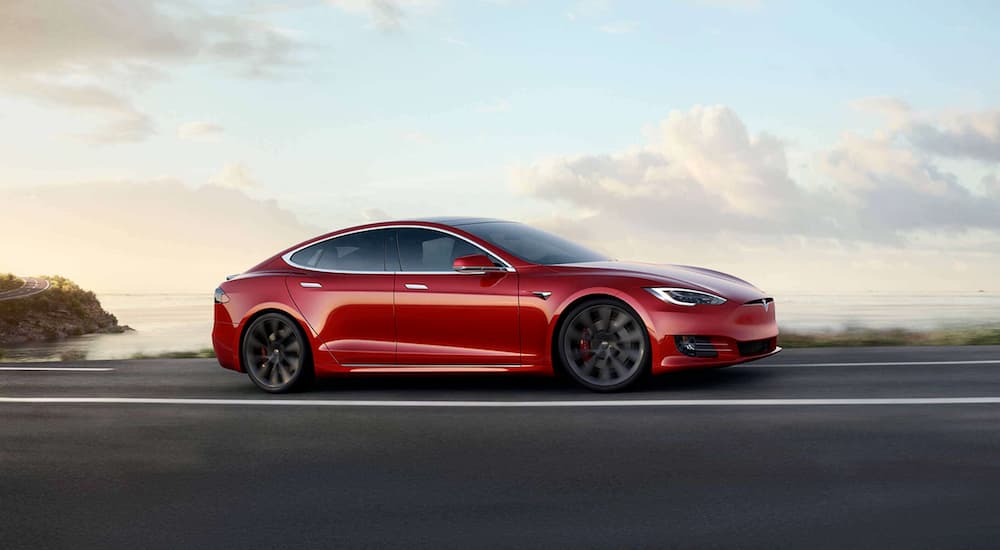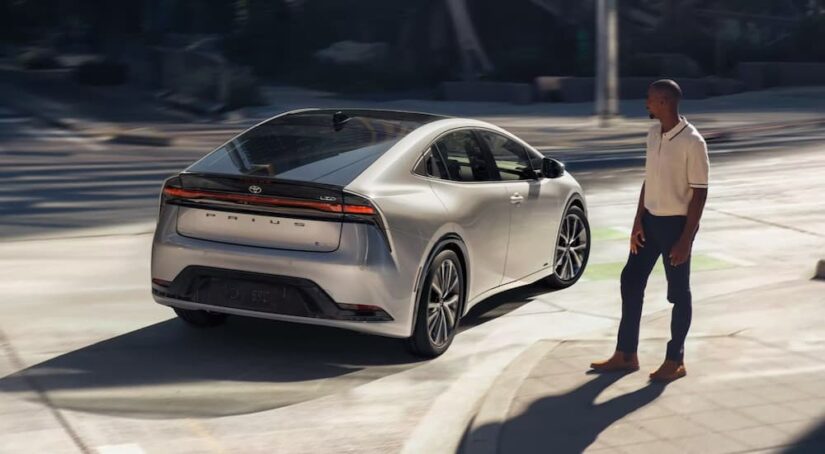You hear about it everywhere—find a vehicle with sustainable features, but what does that mean exactly? Should you find a vehicle that’s made from recycled cans and appointed with repurposed plastic bottles? In the age of focusing on our environment, there’s a lot of speculation about what’s necessary, especially when you’re shopping for a vehicle. When it comes to vehicles with sustainable features, there’s a fine line between what features may be gimmicks and what are actually sustainably sourced. Here are some of the features you should be looking for when you are shopping and what features you may want to think twice about during your search.
Sustainable Car Features to Look For
In your search for a sustainable vehicle, it helps to look at the big picture, instead of falling for many of the gimmicks some automakers are trying to pawn off to their clientele. If you want to do your part to make a positive impact on our environment, you’ll want to think about what really matters. This may just simplify your search to include vehicles with actual features that will benefit our planet. Here are some of these features:
Powertrain Options
When you drive a vehicle that produces fewer emissions, you can make a big difference in the fight to preserve our planet. This can be done by choosing a vehicle that was made for this, like a hybrid, fuel-cell, or an electric vehicle. Gas-only vehicles emit more harmful pollutants into the air and carry a larger carbon footprint than these more eco-conscious options. That’s why choosing your powertrain wisely will put you one giant step ahead when you’re wanting to enhance sustainability in your vehicle.
By choosing a hybrid, you get to enjoy the blend of gas and electric to power you forward. Hybrid vehicles seamlessly switch between these two power sources, allowing you to not only enjoy outstanding fuel economy but also reduce your carbon footprint in the process. Traditional hybrids charge their batteries through a process called regenerative braking, which takes the kinetic energy from braking and uses it to charge the battery that powers the electric motor. You also have the choice of a plug-in hybrid, which can be plugged into your home outlet or a charging station in order to charge its battery. You use way less fuel than you would in a gas-only vehicle, and you get to enjoy the perks of both gas and electric powertrains.
A fuel-cell vehicle is another great choice for our environment. It also utilizes an electric motor to move forward; however, instead of using a battery to provide power to it, it utilizes a fuel-cell stack, which combines hydrogen and oxygen to energize it. You can fill these vehicles up at special hydrogen fueling stations, which makes them inconvenient options if you live in an area without a close station or travel often. It’s important to note that, at the present time, only fuel-cell vehicles can be found in California where most of the stations are also located.
That leaves us with the last option—electric vehicles. These vehicles use a battery pack to power their electric motors, which can be charged up at home or on the go at one of the thousands of charging stations located across the US. Electric vehicles produce no tailpipe emissions, making them the best option if sustainability is on your mind. If you want to do your part to help our planet, choosing a vehicle with a sustainable powertrain is perhaps the most important factor in the entire equation.

LED Lighting Elements
Another sustainable feature that you’ll want to look for is LED lighting. LEDs, or light-emitting diodes, do not contain any harmful materials in their composition and are completely recyclable, which makes them supremely sustainable elements when searching for a vehicle. Not only are they non-toxic, they last longer than traditional bulbs, which allows you to use them for longer periods of time without having to replace them. They’re also brighter than other types of bulbs, which helps you see more clearly during dreary weather or at night. Many new vehicles are outfitted with LED lighting elements, which makes it easy to find the model you really want with the sustainable features to match.
Lightweight Materials
Heavy clunkers of the past did nothing to protect our planet; however, nowadays, most vehicles are made from lighter materials that don’t just make them more aerodynamic and fuel efficient, but also more sustainable as well. From aluminum to carbon fiber to even some recycled materials, building vehicles out of lighter weight materials helps improve performance and efficiency, thus making a big impact on our environment.
Sustainable Car Features to Question
Now, I’m not saying that the following features aren’t sustainable. I’m just saying that there are a lot of gimmicks out there that automakers use to hook buyers that may not actually do much to help the environment. If you’re shopping for a car with sustainable features, be wary of these options:
Color Limitations
Some drivers believe that they need to choose white vehicles to be sustainable. While it is true that vehicles that are darker in color, like black, tend to hold onto heat longer, thus becoming hotter and less efficient on the road, this shouldn’t be a deciding factor in your search for a sustainable vehicle. Remember, look at the big picture. If you want a red EV, the color red isn’t going to have as big of an impact as the positive one that the electric powertrain is having on the environment.

Radar Alerts
The various alerts found in modern-day vehicles help prevent many accidents from occurring. This includes radar alerts, which help you remain a safe distance from the vehicles around you so that you don’t get yourself into an unfortunate accident. Many automakers use this feature as a sustainability factor. They explain that if you choose a car with radar alerts, you reduce your risk of an accident and, thus, limit the amount of debris from your vehicle that will end up in a landfill. While this is correct, it shouldn’t be the reason why you choose a particular vehicle if you’re searching for sustainable features.
Air Filtration Systems
Purifying the air in your car makes for a more enjoyable ride. You’re able to limit the pollen, dust, and harmful pollutants that enter your vehicle. Although this makes for a cleaner environment inside the cabin, it’s not necessarily a sustainable car feature. What is a sustainable feature is fewer tailpipe emissions, which can be found in hybrids, fuel-cells, and EVs.
Recycled Appointments
Sure, it may be fun to tell your friends that your seats are made from recycled bamboo and the gear shifter is recycled plastic. While this does help our environment, it doesn’t need to be a deciding factor when you’re shopping for a vehicle. If you find a hybrid that you really want that has cloth seats that aren’t made of recycled materials, this isn’t going to make or break the impact it’s going to have on the planet.
Make a Real Difference
As you can see, there are many features out there that can really make a difference when it comes to cleaning up our environment. There are also gimmicks that automakers use to try and sell more of their vehicles. This is why it helps to think of the end goal. You want to drive a vehicle that doesn’t leave a large carbon footprint behind, one that’s efficient and built to sustain our environment instead of harming it. It’s easy to get sucked into the gimmicks, but if you do a little research and find a vehicle with an efficient powertrain, you’ll be able to make a positive impact on our planet, more so than just opting for a car that has recycled seat covers.



